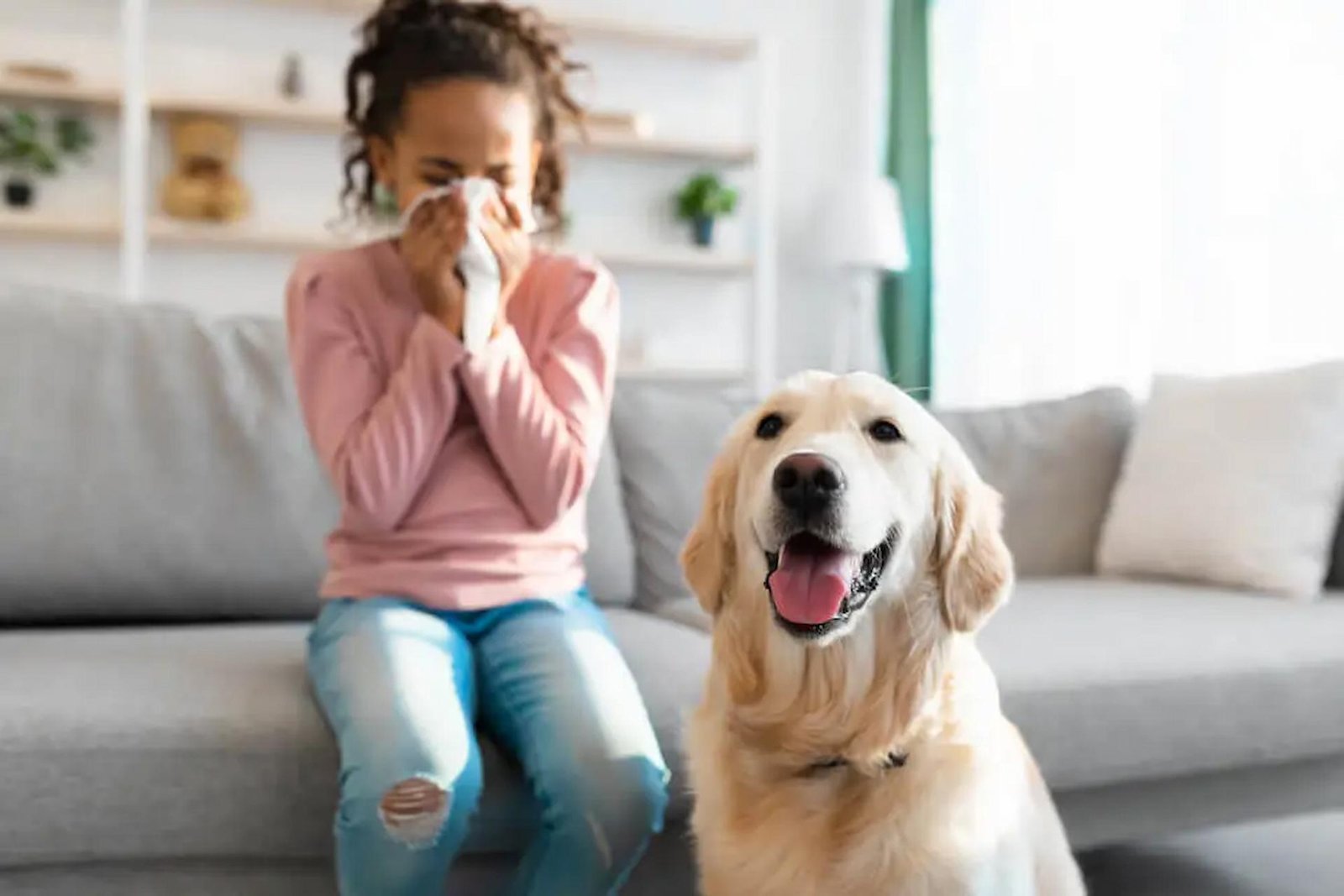Itchy paws, watery eyes, constant sneezing—your furry friend might be trying to tell you something. Just like humans, pets can suffer from allergies that affect their comfort and health. Whether it’s food, pollen, or pesky fleas, allergies can sneak up and cause a host of issues. But with the right knowledge and approach, managing pet allergies becomes easier and more effective. In this guide, we’ll explore the causes, symptoms, and best solutions for keeping your pet allergy-free and thriving.
Pet allergies are more common than most owners realize. From mild skin irritations to chronic respiratory issues, allergic reactions in pets can significantly impact their quality of life. Unfortunately, many symptoms go unnoticed or are mistaken for minor health issues, delaying proper care and treatment.
Understanding common pet allergies and how to handle them effectively is essential for every responsible pet owner. Whether you have a dog, cat, or small mammal, learning to recognize triggers, manage symptoms, and implement preventative measures will ensure your pet stays healthy, happy, and comfortable.
1. Understanding Pet Allergies
Learn the fundamentals behind allergic reactions in pets and why some breeds are more prone than others.
- What Are Pet Allergies?
Allergies in pets occur when their immune system overreacts to harmless substances, known as allergens. This can lead to inflammation, discomfort, and a variety of physical symptoms. - Why It Happens
Genetics, environmental exposure, and immune system sensitivity all contribute to a pet’s likelihood of developing allergies. - Commonly Affected Breeds
Bulldogs, Retrievers, and Persian cats are more susceptible to allergies due to genetic factors and skin type.
2. Symptoms You Shouldn’t Ignore
Early detection is key—spotting the signs of allergies can prevent more serious health issues later on.
- Skin Issues
Excessive scratching, red patches, rashes, or sores on the skin. - Respiratory Distress
Coughing, wheezing, and sneezing could point to airborne allergen exposure. - Digestive Upset
Vomiting, diarrhea, and bloating may indicate a food allergy. - Ear Infections
Frequent head shaking, dark discharge, or unpleasant odour from the ears.
3. The Most Common Allergens in Pets
Identify the usual suspects responsible for your pet’s allergy flare-ups.
- Fleas and Parasites
Flea saliva is a major irritant, leading to flea allergy dermatitis, one of the most common pet allergies. - Environmental Allergens
Pollen, mould, grass, and dust mites can all trigger allergic reactions in sensitive pets. - Food Ingredients
Proteins like beef, chicken, or dairy are often the root cause of food allergies in pets. - Household Products
Cleaning agents, air fresheners, and even certain fabrics can act as irritants.
4. Diagnosis: Getting the Right Answer
Proper diagnosis ensures your pet receives effective, targeted treatment.
- Veterinary Exams
A vet will conduct a thorough physical exam and evaluate your pet’s medical history. - Allergy Testing
Blood tests or intradermal skin testing may be used to pinpoint specific allergens. - Elimination Diet
In cases of suspected food allergies, your vet may recommend a hypoallergenic diet trial.
5. Treatment Options That Work
Explore the different ways you can treat and manage your pet’s allergies safely and effectively.
- Medications
Antihistamines, corticosteroids, or immune-modulating drugs can help control severe symptoms. - Topical Treatments
Medicated shampoos, sprays, and ointments relieve itching and heal the skin. - Allergy Shots (Immunotherapy)
For long-term control, desensitisation through allergy injections is a proven method. - Dietary Changes
Switching to a limited-ingredient or prescription diet may alleviate symptoms linked to pet food intolerance.
6. Prevention and Lifestyle Management
Small lifestyle changes can make a big difference in preventing allergy flare-ups.
- Flea Control
Use vet-recommended flea preventatives year-round to avoid infestations. - Regular Cleaning
Vacuum carpets, wash bedding, and clean surfaces frequently to reduce dust and dander. - Air Filtration
Install HEPA filters to limit airborne allergens indoors. - Seasonal Monitoring
Track high pollen seasons and reduce outdoor exposure if needed.
7. When to Seek Professional Help
Recognise when it’s time to escalate care and consult a veterinary specialist.
- Persistent Symptoms
If your pet shows no improvement despite treatment, further diagnostic work may be needed. - Behavioural Changes
Aggression, anxiety, or lethargy could be signs of prolonged discomfort or pain from untreated allergies. - Recurrent Infections
Chronic ear, skin, or respiratory infections warrant specialised care.
FAQs
1. What are the most common allergies in pets?
The most common pet allergies include flea bites, pollen, mould, dust mites, and certain food proteins such as beef or chicken. Pets may also react to chemicals in cleaning products or fabrics. Identifying the trigger early helps prevent recurring symptoms and supports targeted treatment from your veterinarian.
2. How can I tell if my pet has an allergy?
Typical allergy symptoms include itchy skin, redness, hair loss, ear infections, sneezing, and digestive issues. If your pet constantly scratches, licks, or shows behavioural changes, it’s best to consult a vet for diagnosis and allergy testing to identify the underlying cause.
3. Can pets develop allergies later in life?
Yes. Pets can develop allergies at any age, even after years of tolerance. Environmental changes, new diets, or weakened immune systems can trigger late-onset reactions. Regular health check-ups and observation help detect new allergies early, ensuring timely treatment and long-term comfort.
4. What foods commonly cause pet allergies?
Common food allergens for pets include beef, dairy, chicken, wheat, and soy. These ingredients often trigger digestive issues or skin irritation. Switching to a limited-ingredient or hypoallergenic diet, under veterinary supervision, can help identify and eliminate the problem food source.
5. Are human allergy medicines safe for pets?
No, human allergy medications should never be given to pets without veterinary guidance. Many contain ingredients toxic to animals. Vets can prescribe safe antihistamines or corticosteroids formulated for pets to relieve itching, inflammation, and other allergy symptoms.
6. How can I prevent my pet’s allergies from worsening?
To prevent flare-ups, maintain flea control, clean regularly, use HEPA air filters, and avoid exposure to strong fragrances or chemicals. Keep your pet’s bedding clean and monitor seasonal triggers like pollen. Preventative care helps reduce allergic reactions and supports long-term wellness.
Conclusion
Recognising and managing pet allergies requires a combination of observation, medical support, and consistent care. By identifying symptoms early and understanding the root causes, pet owners can prevent the worsening of conditions and improve their pets’ daily lives. Each pet is different, and what works for one might not suit another, making tailored care essential.
Keep in mind that allergies may change or develop over time. Regular check-ups with your vet, combined with an attentive and proactive approach at home, will help you stay ahead of potential issues. From adjusting diets to implementing preventative routines, small changes can go a long way.
Ultimately, a well-informed pet parent is a pet’s best advocate. Your dedication to identifying and addressing allergies ensures that your furry companion enjoys not just relief from discomfort, but a happier, healthier, and more vibrant life. With proper care and vigilance, you can turn allergy management from a challenge into a success story.





